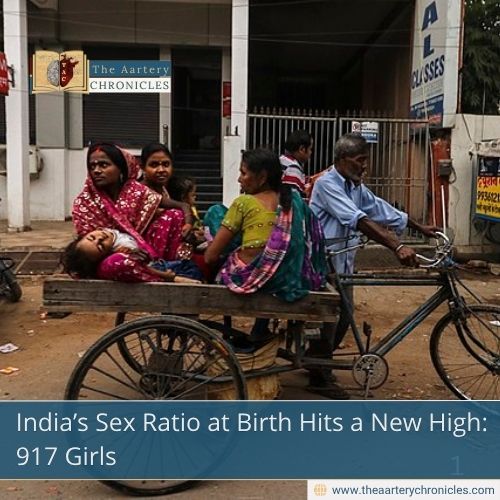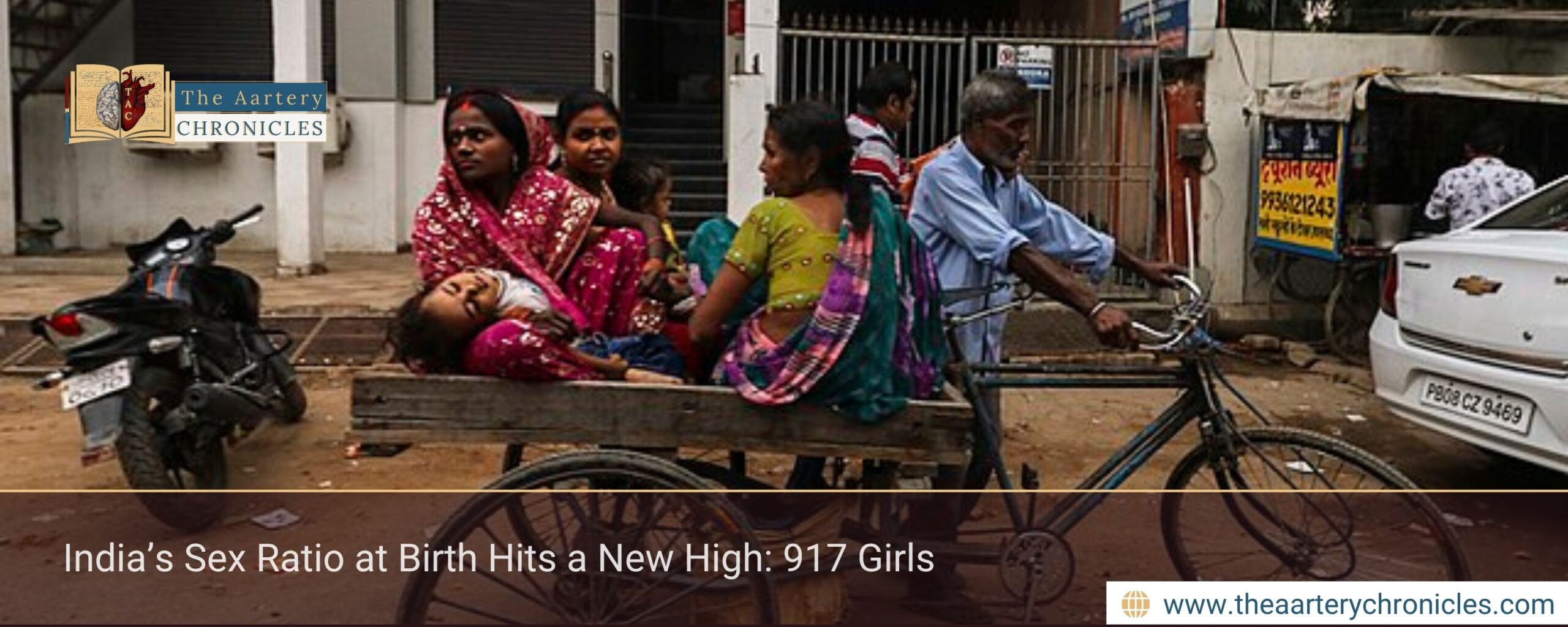

India’s Sex Ratio at Birth Hits a New High: 917 Girls
India has witnessed a significant improvement in the Sex Ratio at Birth (SRB) thanks to the stronger enforcement of the Pre-Conception and Pre-Natal Diagnostic Techniques (Prohibition of Sex Selection) Act. According to the Ministry of Health and Family Welfare, the national SRB has now risen to 917 females per 1,000 males during 2021–23, marking a notable step forward in gender balance and health equity.
Marked Improvement Over the Last Decade
Speaking at a National Sensitisation Meeting on strengthening the PC&PNDT Act, 1994, Aradhana Patnaik, Additional Secretary and Mission Director (NHM), highlighted India’s progress in improving the SRB. She shared that, as per the Sample Registration System (SRS) Report 2023, the SRB increased by 18 points from 819 females per 1,000 males in 2016–18 to 917 females per 1,000 males in 2021–23.
This improvement reflects the combined impact of stricter implementation of the Pre-Conception and Pre-Natal Diagnostic Techniques (Prohibition of Sex Selection) Act and continued awareness initiatives aimed at preventing gender-biased practices.
The PC&PNDT Act: A Legal and Moral Safeguard
Patnaik emphasized that the PC&PNDT Act serves not just as a law but also as a moral and social shield against gender discrimination. She noted that biologically, female children are often more resilient, with stronger immune systems and better natural survival rates compared to males.
However, she urged that the focus should shift from punitive actions to preventive measures, encouraging families and society to prioritize the birth of a healthy child, regardless of gender.
Addressing New Challenges in Implementation
The national meeting also addressed the emerging challenges in enforcing the Pre-Conception and Pre-Natal Diagnostic Techniques (Prohibition of Sex Selection) Act, especially with the rise of digital platforms and online violations. Participants discussed the urgent need for proactive engagement with digital intermediaries to curb the misuse of technology for illegal sex selection practices.
Furthermore, health officials emphasized the importance of coordinated efforts between central and state authorities to close existing gaps, enhance compliance, and ensure that every aspect of the legislation is upheld effectively.
Conclusion
India’s rising Sex Ratio at Birth is a promising indicator of progress toward gender equality and improved maternal-child health. Strengthening the PC&PNDT Act and focusing on preventive awareness continue to play a pivotal role in this transformation.
As Patnaik concluded, “Our goal must be to build a society that values every child equally and works collectively to ensure a healthy, gender-balanced future for the nation.”
Source: Inputs from various media Sources
I’m a pharmacist with a strong background in health sciences. I hold a BSc from Delhi University and a pharmacy degree from PDM University. I write articles and daily health news while interviewing doctors to bring you the latest insights. In my free time, you’ll find me at the gym or lost in a sci-fi novel.
- Priya Bairagi
- Health News and Updates,People Forum
- 7 October 2025
- 15:00








